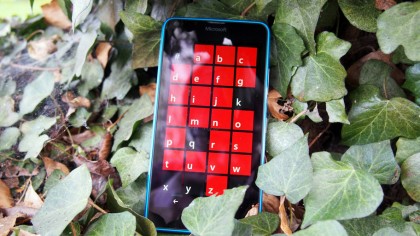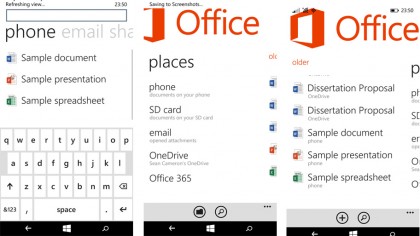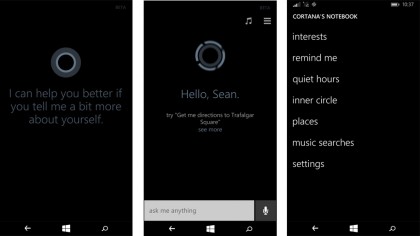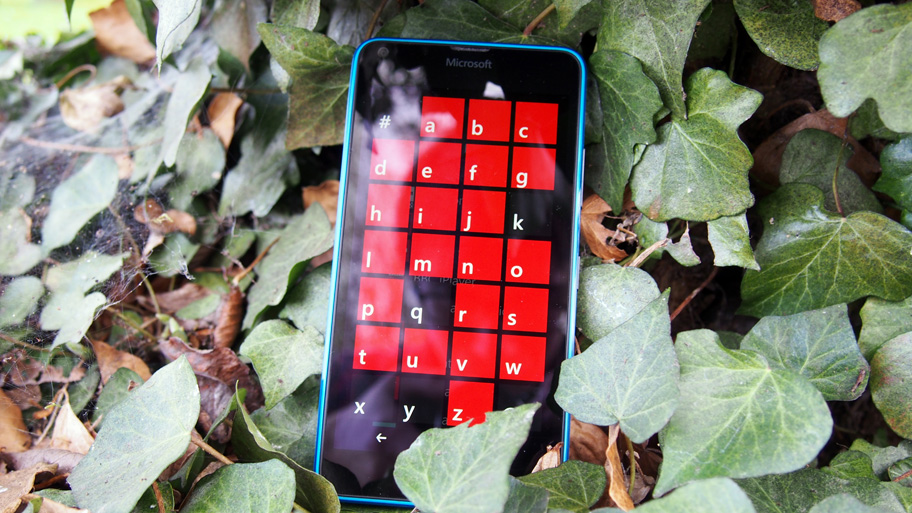Why you can trust TechRadar
Screen
It is interesting to see how far phone screens have progressed in the budget range. Whereas a few years ago, spending less than £200, $300 on a smartphone doomed you to excessive pixelation, now things are very different.

The Moto G (2013) wowed the world with a 720p screen at a less than flagship price several years ago, and now the Lumia 640 joins the club.
With a 5-inch panel, the Lumia 640 certainly sports a comfortable amount of real-estate on which to consume media and play games.
And at 294 PPI, though not quite 'Retina' in its quality, the screen should please everyone (pixel peepers aside). Web browsing was an enjoyable experience, as was viewing HD video.
In the best Lumia tradition, the abilities of the Microsoft Lumia 640's panel do not end there. As mentioned, the Gorilla Glass protection makes using the device a very easy experience.
The nice 'ClearBlack' polarisation filter used previously by Nokia has been applied, meaning that the device has very nice black levels for an LED screen; this makes it easy to use outdoors.

As it is an IPS panel, viewing angles are also excellent. Unusually, for a budget device, the Lumia 640 LTE sports both double-tap to wake and the ever-useful Glance mode, which is configurable to allow for a number of different notifications to appear.
Sign up for breaking news, reviews, opinion, top tech deals, and more.
Automatic brightness is also a nice addition, seeing as this was omitted on the Lumia 630; this makes daily use a little easier, while extending the battery a little.
Nokia always had a strong reputation for the quality of the panels it produced, and if this is anything to go by, Microsoft intends to continue the tradition in style. The screen on the Lumia 640 LTE is one of its main highlights, and is easily one of the best available at this price point.
Office suite
Since Satya Nadella became CEO in 2014, Microsoft has made a strong play for its cloud services. Lumia owners have long had access to Office and OneDrive; however, with the Lumia 640 Redmond has made its strongest push.

Included with the Lumia 640 LTE is a free one-year subscription to Office365 and 30GB of free OneDrive storage. On paper, this is an enormous saving, and it definitely adds value to the device.
OneDrive is certainly a pleasure to use. I found that pictures I took uploaded to the cloud with a minimum of fuss, easily beating Dropbox for speed.
The same was true when accessing files online; the service was consistent and functional, if not remarkable in any regard.
It has long been a necessity for Windows Phone owners to deal with OneDrive in one form or another if they wished to make use of cloud storage, and with 30GB free it is likely that many more will make the jump.
As for the Office 365 subscription, this is where things become a little more difficult. If you are a business owner, the ability to easily sync Word, Excel and Powerpoint files, along with editing them on the go, will no doubt be attractive.
For the average user, however, productivity is as sexy as ever, but Excel will most likely struggle to sell phones. Despite this, it is a nice addition. The Office app for Windows Phone is laid out sensibly and has a number of basic editing options, which remain a little more advanced than their Android and iOS counterparts.

Though typing a 3,000-word essay on a 5-inch screen is as attractive a proposition as ever, for basic tasks on the go, it is more than sufficient. As Microsoft clearly wishes to demonstrate, this is a phone for business as well as pleasure. However, the divide can sometimes be a little too stark.
Windows Phone 8.1 Update 2
The Microsoft Lumia 640 and the Lumia 640 XL are the first devices to arrive toting the latest update for Windows Phone – the drably titled Windows Phone 8.1 Update 2.
Typically, when Windows Phone has been updated, exciting names have been dreamt up, and with the new software came a number of new features. Yet, with Windows 10 on its way later in the year, all focus has been diverted to the task at hand, and this latest update has suffered as a result.
Windows Phone 8.1 Update 2 brings with it a number of bug fixes and stability improvements, and one feature that has been missing from Windows Phone from the start: the ability to pin setting options to the Home screen.
In the past, users had to be content either arranging and using the notification tray or swiping through to the settings menu if they wished to access options such as Wi-Fi or mobile data. Aside from a few third-party app options that could solve the problem partially, this could mean on occasion that using Windows Phone was a pain.

As such, I immediately pinned brightness, Wi-Fi and mobile data to the Home screen, which made general use far easier. Windows Phone 8.1 Update 2 also comes with a rearranged setting menu.
Windows Phone no longer has an endless list of random settings, and different options are grouped according to their functions.
I am something of a Windows Phone veteran, and I found these changes all much to my liking. And though newcomers to the mobile OS may find these changes to be simple common sense, they will most likely be welcome nonetheless, making this a quiet triumph.
Cortana
What is there to say about Cortana that has not already been said?
Microsoft's virtual assistant has been available for Windows Phone owners in the UK since the rollout of the Lumia Denim update in late 2014/early 2015, and it is safe to say that she has been met with a mostly positive reception.

Combining some of the personality of Siri with some of the pre-cognisance of Google Now, along with a little Microsoft secret sauce, Cortana is generally a pleasure to use.
Cortana can perform web searches, compose messages, create reminders – everything that has become the bread and butter of voice assistants everywhere.
In addition to this, she can also interact with select third-party apps, although this function must be baked in by developers, and as such support is somewhat limited at present.
Everything Cortana knows about you is bundled into her 'notebook', which also contains a list of all of her permissions. Here, in a nice departure from the relatively opaque confines of Google Now and Siri, it is easy to control the information that Cortana can access about you.
Though it isn't possible with the Lumia 640 LTE to turn on 'always listening' voice activation, as it is with the likes of the Nokia Lumia 930 and the Lumia 1520, by pinning a tile to the Home screen, I found Cortana to be useful.
Though she is limited to searching through Bing, Cortana is fast becoming the big-value add-on that Microsoft so clearly wishes the service to be.
Sean is a Scottish technology journalist who's written for the likes of T3, Trusted Reviews, TechAdvisor and Expert Reviews.
